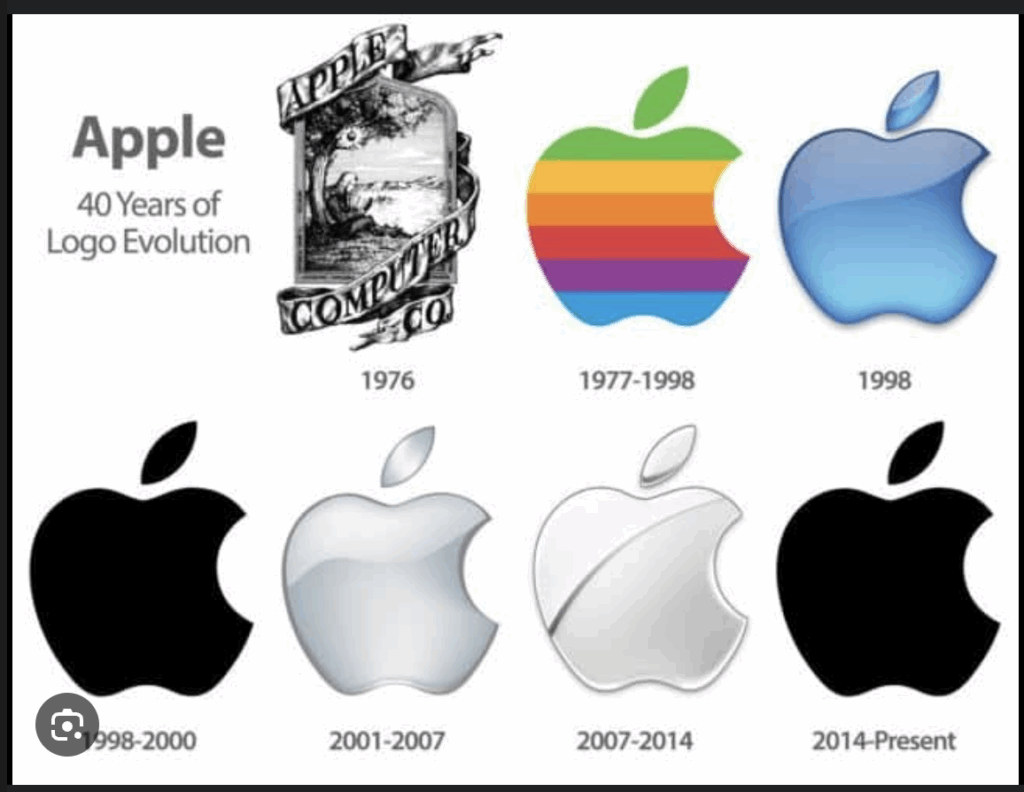Is it Time for a Rebrand? Here are 15 Signs

Do you ever get the feeling that your brand no longer connects with your audience? Or have you noticed that even with your relentless efforts in marketing your products, your customers are still dipping? This could be an indication that it’s time for a rebrand.
Knowing when your business needs a change is fundamental to staying relevant, earning trust, and achieving consistent growth. A successful rebranding strategy can revitalize your brand to reach modern audiences and achieve long-term success.
A successful rebranding strategy’s benefits are infinite– from increased customer engagement, stronger market position, and instilling optimism and motivation on the business journey.
In this comprehensive guide, we want to give you a clear roadmap for your rebranding journey. We will explore rebranding, discuss critical signs that indicate it’s time for a transformation, outline the essential steps of a rebranding process, and provide actionable rebranding tips to ensure success. If you’re unsure where to start, don’t worry; we’ve also included a rebranding checklist to simplify the process!
Understanding Rebranding
Rebranding is the process of changing the identity of your business in order to meet the changing needs of your target market. This may include changing your visual identity, messaging, market positioning, or even the name of your brand. It was noted that nearly 74% of S&P 100 companies have rebranded during their first seven (7) years of operation, showing that rebranding is a critical step in staying competitive, adapting to market changes, and overcoming outdated perceptions about their brand.
But knowing when to rebrand can also be challenging. To help, we’ve identified fifteen (15) clear signs that indicate it is time to consider implementing changes to your brand.
15 Signs It’s Time to Rebrand
Sign #1: Outdated logo or design.
When your competitors are modernizing their look, staying behind the curve can cost you customers. Research shows that 68% of consumers believe that a strong brand or logo is a sign of quality and are more likely to engage with brands that have a well-defined visual identity.

For example, Apple’s rebrand in the late 1990s included simplifying its logo to a sleek monochrome design, symbolizing innovation and minimalism. Nowadays, brands are more inclined to simple logo designs to convey a message of inclusion and diversity. Thus, a clean, minimalist logo often enhances the overall professionalism and appeal of logos and visual assets.
Sign #2: Lack of brand consistency across platforms.
A consistent identity is vital for trust and recognition. You should ask yourself: “Are your visuals aligned across all platforms? or does your website feel disconnected from your social media presence?” If you answered no to both questions, then a rebrand can establish uniformity and create a seamless customer experience.
You can use a rebranding checklist to identify inconsistencies and ensure alignment across your website, social media, and marketing materials.
Sign #3: Shift in target audience demographics.
As your audience evolves, so must your brand. If your current branding no longer resonates with younger markets or the demographics in the demographics, a rebranding strategy can help you reconnect.

For example, when Old Spice noticed its branding was perceived as outdated and targeted primarily at older generations, the company underwent a rebrand. They revamped their messaging and ads to attract younger men, successfully regaining market traction.
Sign #4: Expanding into new markets or geographies.
Entering new markets requires adapting your branding to local expectations. A tailored rebranding strategy ensures your business appeals to new audiences. Creating region-specific visuals and messaging while keeping global consistency is the key to success.
One good example is Airbnb’s rebrand, which involves creating a universal brand identity that could resonate with travelers worldwide while maintaining its local community appeal.
Sign #5: Negative brand associations.
Sometimes, a brand can suffer from negative publicity or outdated perceptions. Rebranding offers a chance to redefine your reputation and shed past baggage. For example, after facing negative press, Uber revamped its visual identity and brand messaging to communicate safety, reliability, and customer care.
Sign #6: Customer confusion or lack of recognition.
If customers are unclear about what you offer or fail to recognize your brand, it may be time for a clearer, stronger identity. This can happen when businesses expand their product lines without aligning their brand messaging. To address this, tools like an online background remover can streamline the process of standardizing your visuals and your brand image.
Sign #7: Introducing new products or services.
When your business expands to include new products or services, your brand should reflect this growth. Failing to do so can make your brand feel fragmented and outdated. Take, for example, Amazon. It evolved from an online bookstore into a global e-commerce giant, requiring a consistent brand identity that encompasses its diverse offerings.
Sign #8: Mergers, acquisitions, or organizational restructuring.
Major changes like mergers or acquisitions often require a unified brand identity to communicate a cohesive vision. A rebrand can align all teams under one clear and consistent brand. Suppose you are in the process of merging. In that case, tools like an online background remover can help refine visual elements by easily allowing you to remove background distractions, ensuring a polished and cohesive appearance.
Sign #9: Competitors with stronger branding.
If your competitors’ branding feels sharper, cleaner, or more modern, it may be time to catch up. A solid rebranding strategy can position you as an industry leader. Start by evaluating competitors and applying practical rebranding tips to highlight your unique strengths.
Sign #10: Struggling to differentiate in the market.
Standing out in a crowded market is essential. Rebranding can highlight your unique value propositions, setting you apart in a crowded marketplace. A targeted rebranding strategy can help you showcase your unique and fresh brand identity, making it easier for customers to identify what makes you special.
Sign #11: Declining sales or stagnant growth.
If your sales are slipping, your brand might not be connecting with its audience. Rebranding can reinvigorate interest and attract new customers. A strong plan, guided by a rebranding checklist, ensures a smooth transition.
Sign #12: Poor engagement on digital platforms.
Is your content not gaining likes and views any more? If yes, low engagement rates can signal a disconnect between your brand’s identity and what customers expect. A rebranding strategy can modernize your content and visuals to re-engage your audience. Implementing tips on rebranding ensures your approach stays relevant in a digital-first world.
Sign # 13: Disconnection between internal culture and external brand.
When your external brand no longer aligns with your company culture, employees may struggle to advocate for your business. A rebrand can bridge this gap, ensuring that your values, mission, and vision are reflected in your messaging and visuals. Aligning internal culture with external branding not only improves morale but also helps customers perceive a more authentic company.
Sign #14: Outdated mission, vision, or values.
Your company’s mission, vision, and values act as a foundation for all business activities. If these feel outdated or no longer reflect your direction, rebranding can clarify and refresh your core message. Additionally, applying some tips on rebranding can ensure internal and external alignment, enabling your business to inspire confidence and attract the right audience.
Sign #15: Modernization is needed to stay relevant in a digital-first world.
As businesses rely more heavily on digital platforms, outdated branding can hinder your online growth. A modernized rebranding strategy ensures compatibility with current trends, digital marketing tools, and social media channels. From website redesigns to updated social visuals, embracing digital-friendly branding keeps your company competitive.
What Are the Steps in Rebranding?
Rebranding is a multi-step process that requires planning, execution, and ongoing assessment. To successfully rebrand, follow these seven (7) actionable steps:
Step 1: Conduct comprehensive brand audits. Begin by evaluating your current brand performance, strengths, weaknesses, and customer perceptions. This helps you identify areas that need improvement and opportunities for growth.
Step 2: Engage stakeholders and gather insights. Collaborate with key stakeholders, including employees, leadership, and loyal customers. Gathering input from these groups ensures that the rebrand reflects shared values and customer expectations.
Step 3: Define clear objectives and goals for the rebrand. Establish clear, measurable goals that outline what you hope to achieve with the rebrand. For example, improving customer recognition or expanding market presence.
Step 4: Develop a cohesive brand strategy. Focus on your messaging, brand voice, and positioning in the market. Align your strategy with updated business goals and ensure consistency across all customer touchpoints.
Step 5: Design new visual elements and brand assets. Create or update your logo, typography, color palette, website, and marketing materials. These visual changes should align with your new brand identity and communicate your message effectively.
Step 6: Plan and execute the brand launch. Develop a detailed roadmap for introducing your rebrand internally and externally. Plan campaigns, create launch content, and communicate transparently with customers and stakeholders.
Step 7: Monitor performance and make necessary adjustments. After launching your rebrand, measure your performance, such as engagement rates, sales metrics, or customer feedback. Be prepared to make adjustments based on these insights to maximize the impact of your efforts.
Tips on Rebranding
Now that you understand the rebranding process, here are five (5) practical tips to guide you through a successful rebrand:
- Ensure alignment with business objectives and values: Your rebrand should reflect your company’s mission, values, and strategic goals to avoid any disconnect.
- Maintain consistency across all brand touchpoints: From your website to social media to packaging, ensure your visuals and messaging are cohesive wherever your brand appears.
- Communicate transparently with existing customers: Keep your loyal customers informed about your rebrand, explaining the reasons behind it and how it will benefit them.
- Leverage customer feedback during the rebranding process: Engage customers throughout the process to gain valuable insights into what they want and expect from your brand.
- Monitor market reactions and be prepared to adapt: After launch, actively track customer responses and market feedback and make adjustments to strengthen your brand’s impact.
Rebranding Checklist
As you prepare to embark on the rebranding process, use this essential checklist to lay a solid foundation:
- Assess current brand performance and perception: Conduct thorough research to understand your current brand’s strengths, weaknesses, and market position.
- Identify key stakeholders and assemble a rebranding team: Bring together a dedicated team that includes leadership, employees, designers, and marketing experts.
- Set measurable goals and timelines: Outline clear objectives and a realistic timeline to guide the rebranding process.
- Develop a comprehensive communication plan: Create a detailed plan for launching the rebrand both internally and externally to ensure a smooth rollout.
- Prepare for the launch and post-launch evaluation: Plan campaigns for the launch and track post-launch metrics to assess success and identify areas for improvement.
Conclusion
Rebranding is like hitting the refresh button for your business. If your logo feels stuck in the past, your audience is shifting, or your engagement is taking a hit, it might be a sign that it’s time for a change. A well-thought-out rebrand can give your business a fresh start, helping you stand out, reconnect with your customers, and show off what you truly stand for. It’s not just about looking better; it’s about creating a brand that feels relevant, exciting, and true to your company’s mission.
The key is to keep a pulse on your brand’s health before things spiral. Ask yourself: Does your brand still resonate with your audience? Is it clear and consistent across every platform? Regular check-ins, honest feedback, and staying aware of industry trends can help you know when it’s time to shake things up. The sooner you spot the signs, the easier it is to take control and steer your brand in the right direction.
At the end of the day, rebranding is more than just a change—it’s an opportunity to evolve, grow, and build stronger connections with your audience. By embracing change and keeping your brand fresh and aligned, you’re not just surviving in the market; you’re thriving. So don’t be afraid to take that leap!
